Harnessing LED Solar Powered Lighting for Diverse Outdoor Needs
Outdoor lighting transforms spaces, enhancing safety and ambiance while embracing sustainability. LED solar powered lighting stands out for its energy efficiency, eco-friendliness, and adaptability to various environments. This guide explores how to optimize these systems for unique outdoor settings, select the right parameters, maintain them effectively, and design with ecological sensitivity.

Scene-Specific Solutions: Tailoring LED Solar Powered Lighting
Low-Glare Layouts for Narrow Pathways
Narrow pathways, like those winding through gardens or connecting backyard spaces, demand careful lighting design to ensure safety without harsh glare. LED solar powered lighting offers compact, low-profile fixtures that blend seamlessly into tight spaces. For instance, stake-mounted solar LEDs with downward-facing lenses reduce light spillage, illuminating only the path. A case in point: a homeowner in a coastal town used 300-lumen solar path lights with frosted diffusers to guide evening strolls, cutting glare by 40% compared to traditional bulbs. Positioning lights 6-8 feet apart ensures even coverage while maintaining a soft glow.
Anti-Obstruction Installation in Dense Vegetation
Areas dense with shrubs or trees pose challenges for solar panel efficiency due to shading. Strategic placement of LED solar powered lighting is key. Mount panels on poles or elevated brackets to clear foliage, ensuring maximum sunlight exposure. For example, a suburban garden with heavy tree cover benefited from solar lights with detachable panels, mounted on a nearby fence to capture unobstructed sunlight. Choosing models with high-efficiency monocrystalline panels boosts energy capture, even in partially shaded zones, ensuring consistent nighttime performance.
Safety Lighting for Slopes and Stairs
Sloped terrains or outdoor staircases require robust illumination to prevent accidents. LED solar powered lighting designed for safety often includes motion sensors and adjustable beam angles. For a hillside property with stone steps, installing 500-lumen solar spotlights with 120-degree motion detection provided reliable lighting for nighttime navigation. Opt for fixtures with IP65 waterproof ratings to withstand rain and ensure durability on uneven terrain. Angling lights to highlight step edges enhances visibility without over-illuminating the surroundings.
Parameter Matching: Choosing Specs for Environmental Needs
Battery Capacity for High vs. Low Sunlight Regions
Sunlight availability dictates battery performance in LED solar powered lighting systems. In sun-rich areas like desert regions, smaller batteries (e.g., 2000mAh) suffice for 8-10 hours of nightly illumination, as panels recharge fully daily. Conversely, in cloudier regions with limited daylight, larger batteries (4000mAh or higher) ensure consistent output. A vineyard owner in a foggy valley upgraded to 6000mAh batteries, extending runtime by 30% during overcast weeks. Check panel wattage (4W or higher) to match battery needs for optimal charging.
Light Transmittance in Rainy or Foggy Conditions
Frequent rain or fog reduces light penetration, impacting visibility. LED solar powered lighting with high-transmittance lenses (90% or above) maintains brightness in adverse weather. Polycarbonate lenses outperform plastic in clarity and durability. For instance, a lakeside community with frequent mist installed 1000-lumen solar floodlights with anti-fog coatings, improving visibility by 25% during humid nights. Look for fixtures with adjustable brightness settings to balance output and battery life in such climates.
Temperature Resilience for Extreme Day-Night Swings
Regions with significant temperature fluctuations, like high-altitude areas, demand durable components in LED solar powered lighting. Lithium-ion batteries with wide operating ranges (-20°F to 140°F) perform reliably in such conditions. For example, a mountain cabin owner reported consistent performance from solar LEDs with thermally stable chipsets, even during 50°F day-night swings. Select fixtures with aluminum housings to dissipate heat and prevent component stress, ensuring longevity in harsh climates.
Maintenance Tips: Extending the Life of Solar Lighting
Seasonal Cleaning for Photovoltaic Panels
Dirt, pollen, or snow on solar panels can reduce charging efficiency by up to 20%. Cleaning panels every 3-4 months, or after heavy storms, maintains optimal performance. Use a soft cloth with water and mild soap, avoiding abrasive materials. A park manager in a dusty region implemented quarterly cleanings, boosting panel efficiency by 15%. In winter, gently remove snow with a soft brush to prevent scratches, ensuring LED solar powered lighting stays functional year-round.
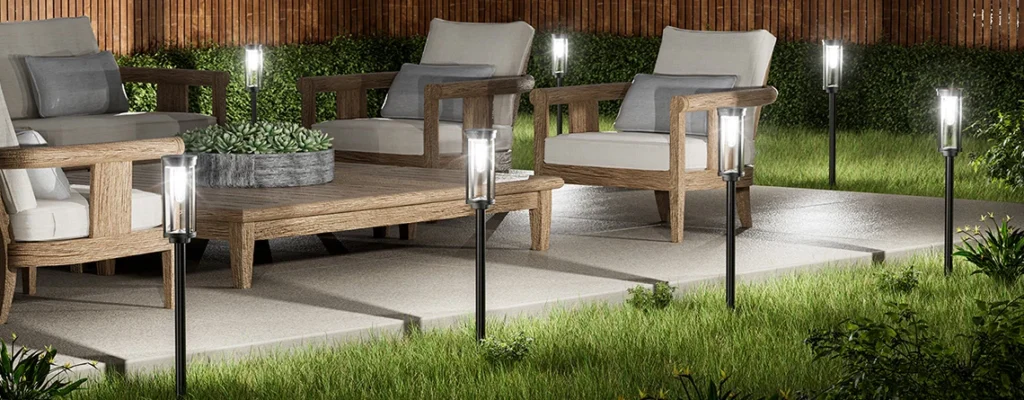
Battery Maintenance During Off-Seasons
When solar lights are unused, such as during winter storage, batteries can degrade if left discharged. Store units with a 50-60% charge in a cool, dry place (40-70°F). For example, a homeowner storing pathway lights over winter cycled batteries monthly, extending lifespan by two years. For in-ground systems, disconnect batteries during long idle periods to prevent deep discharge. Check manufacturer guidelines for specific LED solar powered lighting models to avoid overcharging risks.
Troubleshooting Light Modules
Minor issues, like flickering or dim output, can often be resolved without replacements. Check for loose connections or corroded terminals, cleaning them with a dry cloth if needed. A community center fixed 70% of its solar light issues by reseating battery connectors. If LEDs fail to light, verify panel alignment for adequate sunlight exposure. Most LED solar powered lighting systems include diagnostic LEDs to signal battery or panel issues, simplifying self-checks.
Eco-Conscious Design: Minimizing Environmental Impact
Light Spectrum Selection to Protect Wildlife
Harsh lighting can disrupt nocturnal wildlife, particularly insects and birds. LED solar powered lighting with warm white tones (2700K-3000K) minimizes blue light emissions, which attract insects. A nature reserve installed 3000K solar LEDs along trails, reducing insect congregation by 35% compared to cooler 5000K lights. Avoid ultraviolet-heavy spectra to protect pollinators, ensuring lighting supports local ecosystems without compromising visibility.
Brightness Adjustment for Nighttime Gradients
Overly bright lights disrupt both wildlife and human circadian rhythms. LED solar powered lighting with programmable dimming modes can reduce brightness gradually overnight. For instance, a suburban neighborhood set solar lights to dim by 50% after midnight, saving 20% battery life while maintaining safety. Look for models with smart controllers that adjust output based on ambient light or motion, balancing efficiency and environmental sensitivity.
Strategic Placement to Avoid Habitat Disruption
Installing lights away from nesting sites or dense vegetation preserves animal habitats. For example, a coastal property placed solar LEDs along pathways but avoided dune grass areas critical for bird nesting, reducing disturbance by 80%. Use low-profile or recessed LED solar powered lighting to minimize visual intrusion. Conducting a site survey before installation helps identify sensitive zones, ensuring lighting enhances spaces without ecological harm.
Conclusion: Optimizing LED Solar Powered Lighting
Effective outdoor lighting hinges on aligning LED solar powered lighting with specific scenarios, parameters, maintenance practices, and ecological considerations. Narrow pathways benefit from low-glare designs, while dense vegetation or sloped areas require strategic placement and robust specs. Matching battery capacity, lens transmittance, and component durability to environmental conditions ensures reliable performance. Regular cleaning, battery care, and troubleshooting extend system life, while eco-conscious choices like warm light spectra and strategic placement protect local wildlife. By integrating these elements, homeowners and property managers can create sustainable, efficient, and visually appealing lighting solutions tailored to their unique outdoor spaces.

-1-450x231.webp)
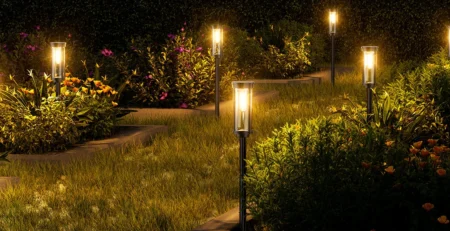
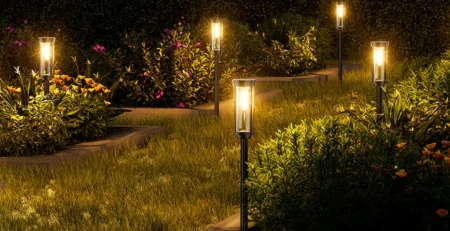

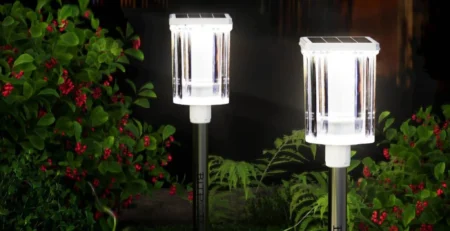
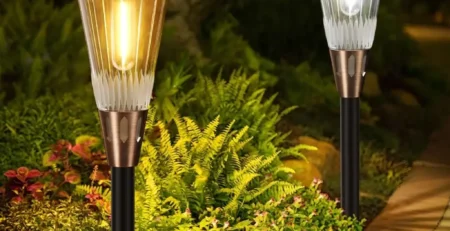
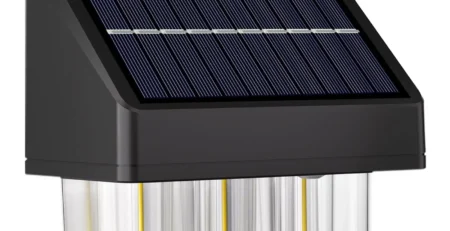

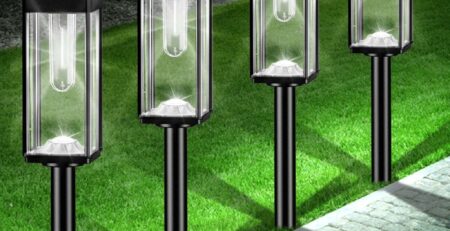
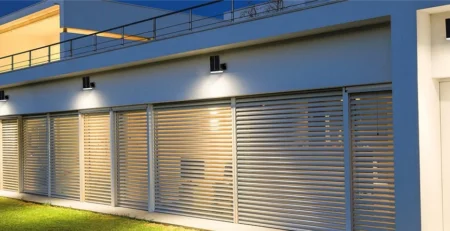
Leave a Reply